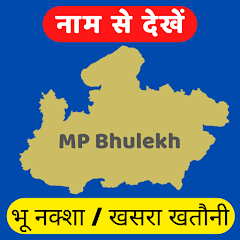Introduction
In India, land has always been one of the most valuable and sensitive assets. Whether it’s for farming, building a home, or business purposes, land ownership and its proper documentation are essential. Traditionally, land records were maintained in handwritten registers at government offices, which often led to delays, errors, and even disputes.
To modernize and simplify this process, state governments—under the Digital India initiative—have created online portals for land records. One such system is Bhu Abhilekh . This digital platform allows people to access their land records anytime, anywhere, without having to visit government offices.
In this article, we’ll explore what Bhu Abhilekh is, how it works, its benefits, challenges, and why it’s an important step toward transparency and citizen empowerment.
What is Bhu Abhilekh?
The term Bhu Abhilekh (भूमि अभिलेख) translates to “Land Records” in English. It is essentially an online database where the state government stores and updates details about land ownership, boundaries, and transactions.
It includes important documents such as:
Khasra – Record of land plot numbers and their size.
Khatauni – Details of landholders and their respective holdings.
Jamabandi – Revenue record showing rights and liabilities on land.
Bhu Naksha – Digital maps showing the exact boundaries and location of land.
Every state in India has its own Bhu Abhilekh portal. While the design and process may differ, the purpose remains the same—to make land records easily accessible and transparent.
Key Features of Bhu Abhilekh
Online Access to Land Records
Citizens can check their Khasra, Khatauni, and other documents without visiting a revenue office.
Digital Land Maps (Bhu Naksha)
View and download land maps that clearly mark plot boundaries.
Multiple Search Options
Search by owner’s name, Khasra number, account number, or location details.
Transparency in Transactions
Helps verify land ownership before buying or selling property.
Mobile-Friendly Access
Many states offer mobile apps or responsive websites for easy access.
Low or No Fees
Most services are free or cost very little compared to traditional methods.
Language Options
Available in Hindi, English, and sometimes in local regional languages for wider reach.
How to Access Bhu Abhilekh
While each state has its own portal, the general process is similar. For example:
Madhya Pradesh – https://mpbhulekh.gov.in
Uttar Pradesh – https://upbhulekh.gov.in
Maharashtra – https://bhulekh.mahabhumi.gov.in
Chhattisgarh – https://bhuiyan.cg.nic.in
Step-by-Step Guide
Visit the Official Portal
Go to your state’s official land record website: bhu abhilekh
Select the Required Service
Options may include viewing Khasra, Khatauni, Jamabandi, or Bhu Naksha.
Enter Property Details
Choose district, tehsil, and village. Enter the Khasra number or owner’s name.
View or Download Records
You can see the details on-screen or download them as a PDF for official use.
Benefits of Bhu Abhilekh
Saves Time and Effort
No more standing in long queues at government offices.
Increases Trust and Security
Digital records reduce the chances of tampering or forgery.
Empowers Farmers
Farmers can quickly get documents needed for loans, crop insurance, or subsidies.
Prevents Fraud
Easy verification of land ownership helps avoid illegal transactions.
Supports Real Estate Transparency
Buyers can check property details before making a purchase.
Environment-Friendly
Reduces paperwork, saving trees and promoting sustainable governance.
Challenges and Limitations
Even though Bhu Abhilekh has transformed land management, some issues remain:
Incomplete Data – Not all historical records are digitized yet.
Internet Connectivity – Rural areas may face difficulties accessing online portals.
Technical Issues – Slow servers or downtime can interrupt access.
Lack of Awareness – Many citizens don’t know how to use the system.
To overcome these, governments need to invest in public awareness, better rural internet access, and complete digitization of records.
The Future of Land Records
Bhu Abhilekh will continue to evolve with technology. The government is working on integrating:
Blockchain Technology for tamper-proof records.
Mobile Apps with voice-based assistance in regional languages.
GIS Mapping for precise location tracking of plots.
Aadhaar Integration for secure and verified access.
These developments will make the system even more secure, transparent, and citizen-friendly.
Conclusion
Bhu Abhilekh is more than just an online portal—it is a gateway to trust, transparency, and empowerment for citizens. By making land records available online, it reduces fraud, saves time, and empowers both farmers and urban property owners.
As India moves toward complete digital governance, platforms like Bhu Abhilekh will play a vital role in ensuring that every citizen has quick, fair, and transparent access to land information.
Whether you are a farmer applying for a subsidy, a buyer checking property details, or simply someone who wants to verify ancestral land, Bhu Abhilekh puts the power of information directly in your hands.



